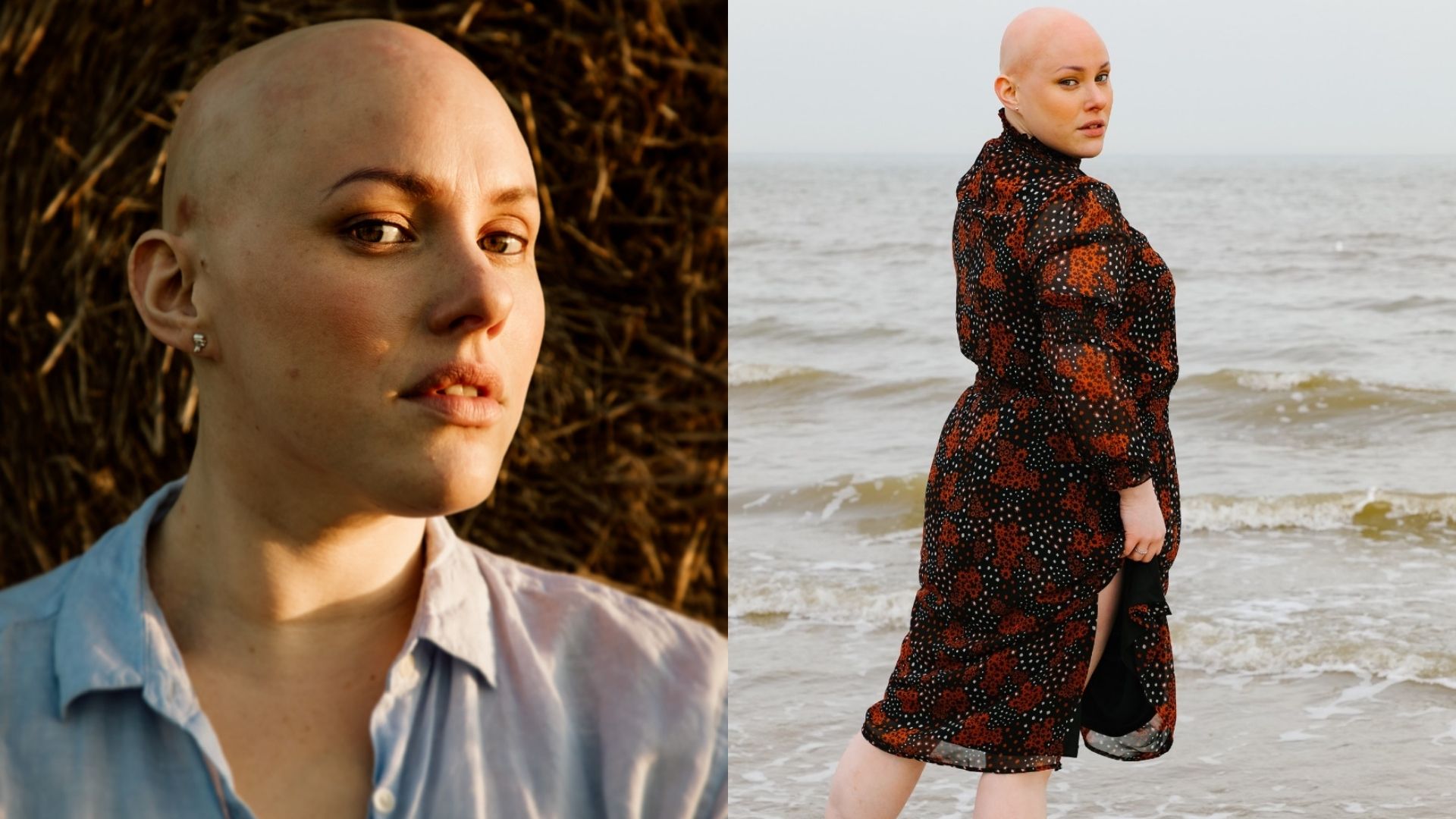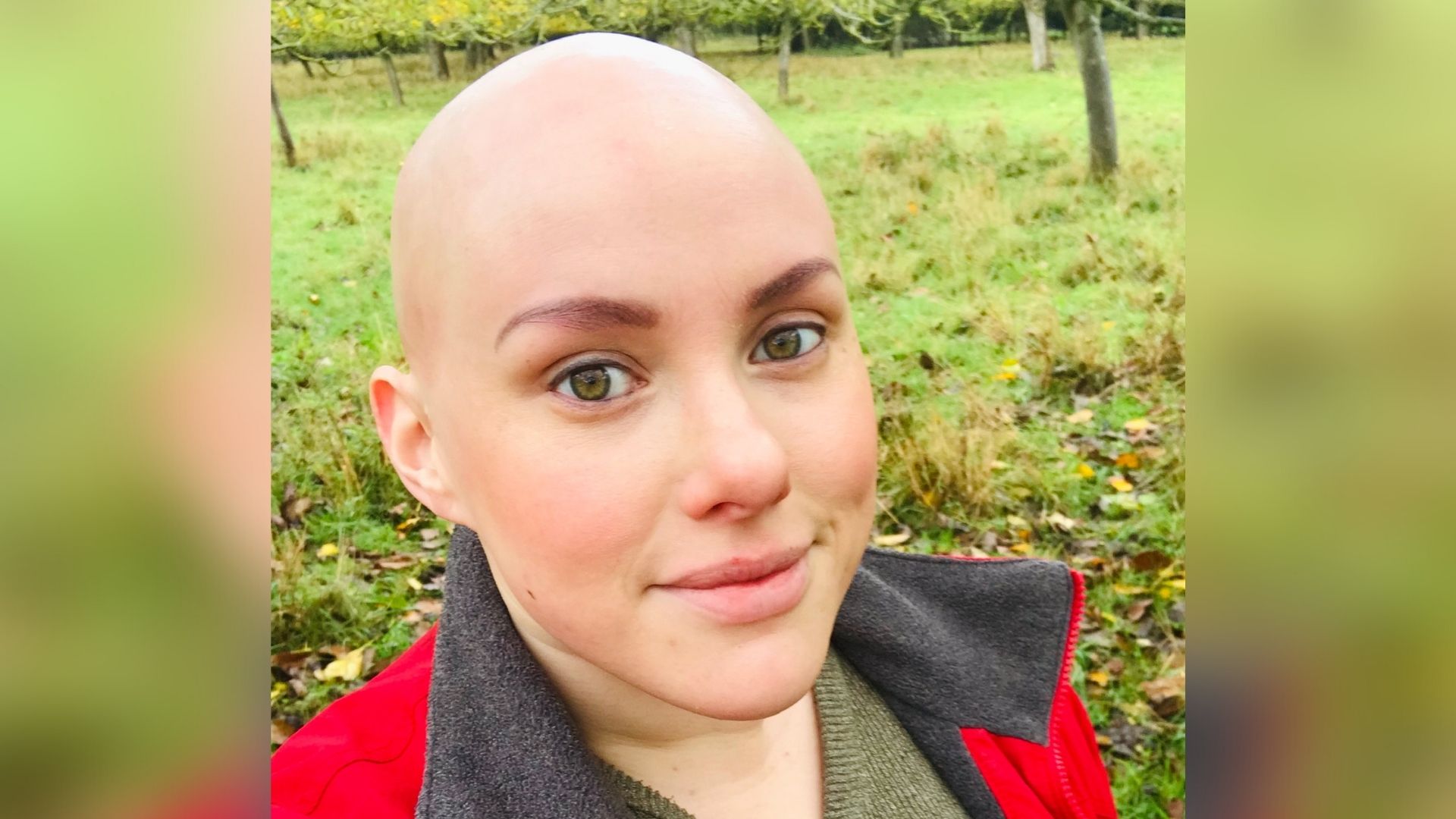I have alopecia, an autoimmune condition which caused me to start losing my hair when I was 13 years old.
I was so embarrassed as my hair loss progressed that I stopped going to school. In fact, I stopped leaving the house altogether. I couldn’t face how different I looked and completely withdrew for around six months.
Aged 14, at the start of a new academic year, I forced myself back to school. After a week of trying to hide my hair loss with hairbands and sitting at the back of classes, I asked my hairdresser to shave my head and help me style a wig. I wore it every day, even though it aggravated the eczema on my scalp and was far too big for me.
If people ask me about my hair loss now, I see it as an opportunity to let someone know about alopecia. That feels empowering, not embarrassing.
Putting on a wig didn’t stop me from feeling different, but it allowed me to pretend I was the same as everyone else. As a teenager, I kept my bald head a secret, avoiding any situations which would mean I had to ‘out’ myself or tell someone I wore a wig.
If people commented on my hair, I would clam up and change the subject. I felt ashamed to talk about it.
I have carried this shame about my visible difference throughout most of my life. I was terrified to go to university where I knew I would be surrounded by new people. I asked my doctor to write me a note to support my application for ensuite accommodation to help keep my alopecia a secret from my new flatmates.
My anxiety around new situations never reduced. Starting a new job, for example, I always wonder if I should mention my alopecia at application, interview or once I start the role.
For the first few years of my career, I didn’t tell anyone. It was exhausting to carry the weight of being ‘different’ in secret. In honesty, the fear of how people would perceive me when I talked about it was always far worse than any reaction I received.

Laura wants to see more brands feature people who look different in their campaigns. Photo credit: Debbie Burrows
During the lockdown last year, however, something changed. I wasn’t having to go out and face the world every day with make-up and a wig to disguise my differences. I realised that, all these years after developing my condition, I was still terrified to step out my front door without this ‘disguise’.
So, I started looking for others who might feel the same. I shared my experiences on Instagram and it’s really helping me find the courage to embrace my hair loss and even work towards celebrating it.
Sharing my story has helped others with visible differences too. I don’t want anyone else out there to ever feel ashamed of looking different just because society has told us we should look a certain way.
Alopecia is a random autoimmune condition that I have no control over. It has taken my eyelashes, eyebrows, and all the hair on my body. For many years, alopecia took my confidence too. But no more.
I’ve realised that if I start embracing myself for who I am, then I don’t have to wear a wig in situations I don’t want to. I don’t have to wear it to ‘hide’ my alopecia at all. I can choose to wear whatever wig as and when I want to, but know I am beautiful without it too.
If people ask me about my hair loss now, I see it as an opportunity to let someone know about alopecia. That feels empowering, not embarrassing.
Now, I share regular selfies of my bald head on social media, hoping I can be an inspiration to someone feeling how I did just a year ago.
I love watching Changing Faces challenge creative industries to think about diverse representation with their campaigning and partnership work with organisations.
I’ve realised that if I start embracing myself for who I am, then I don’t have to wear a wig in situations I don’t want to. I don’t have to wear it to ‘hide’ my alopecia at all. I can choose to wear whatever wig as and when I want to, but know I am beautiful without it too.
I’ve even put myself forward for real-life castings in the hope that brands will consider including a real, happy, healthy bald woman in promoting their brand. I may not be a professional model, but I am finally becoming the role model I needed when I was 13.
If I could give one piece of advice to someone living with a visible difference it would be this: there is no one ‘right way’ to handle your condition.
While it’s helpful to see techniques and tools that others use to overcome their fears about living with a visible difference, only you are in control of how you manage your life. You can decide when and how to communicate about your visible difference in a way that makes you feel most comfortable – taking full control of how you choose to interact with the world.
Lead image credit: Debbie Burrows
